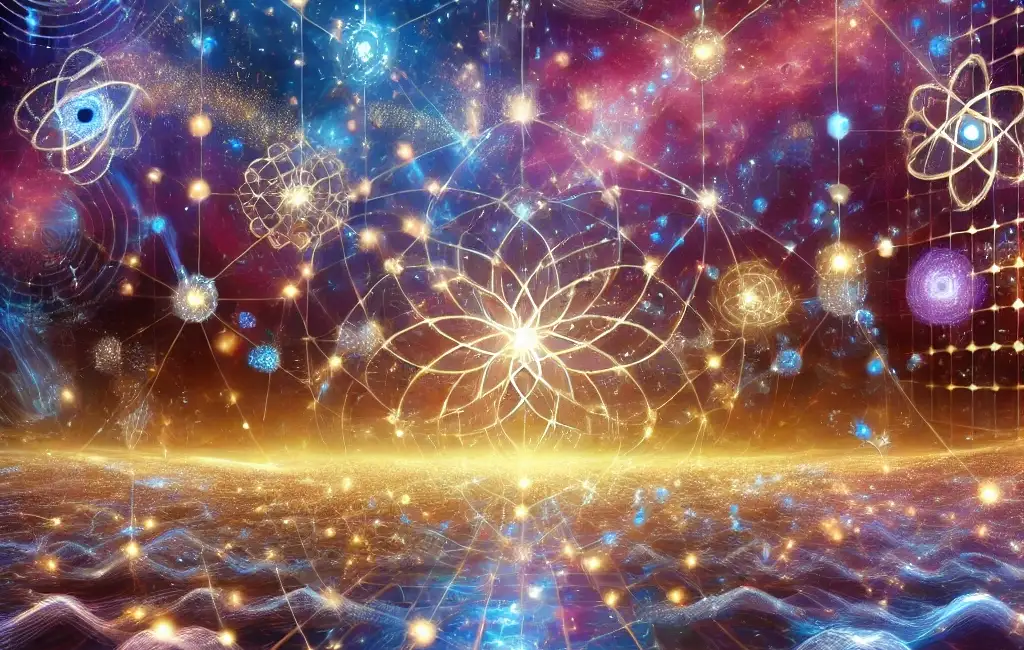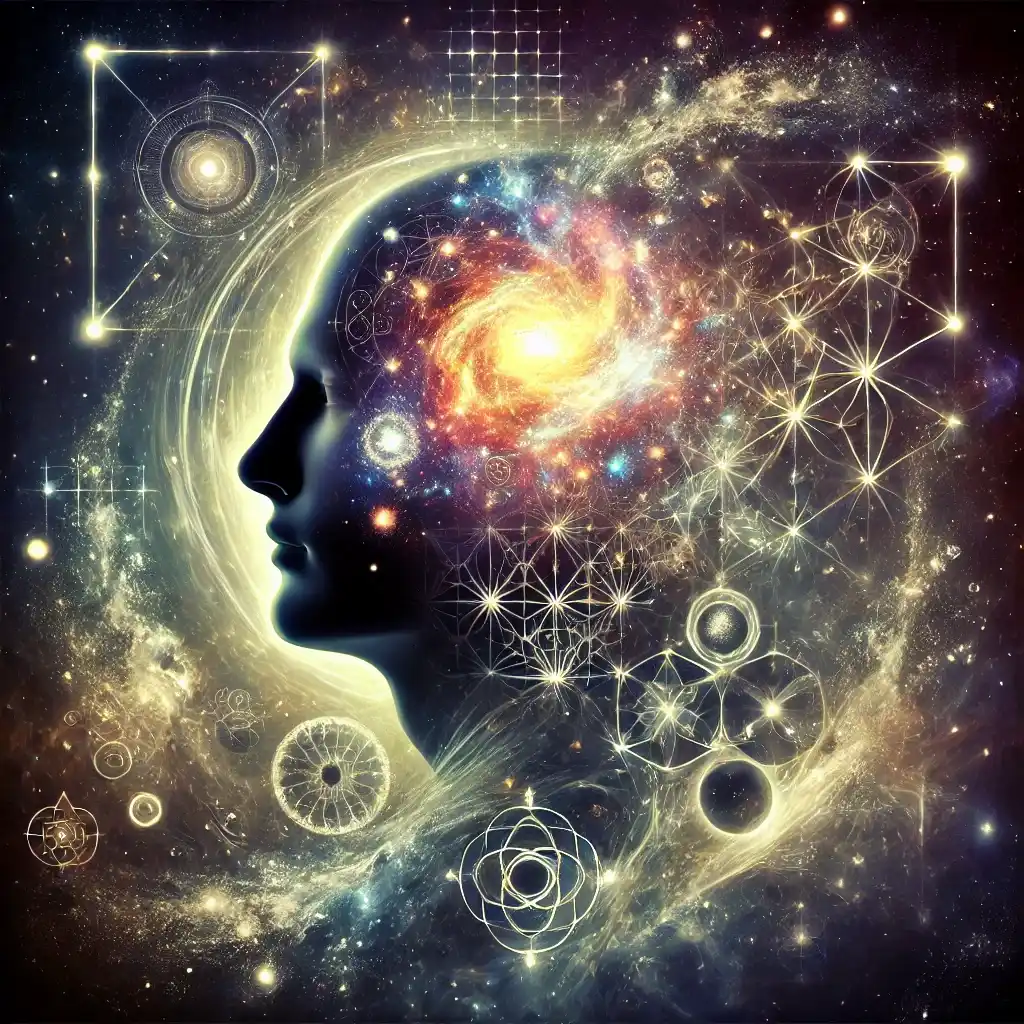Connection between Quantum Physics and Spirituality
Quantum physics and spirituality, two seemingly disparate fields, have begun to intertwine in fascinating ways in recent decades. This connection has led to new insights into the nature of reality and human consciousness.
What is quantum physics?
Quantum physics is a branch of physics that studies the behavior of matter and energy at the subatomic level, which we could relate to the different types of spiritual energy. It emerged in the early 20th century with the pioneering work of Max Planck and was developed by scientists such as Albert Einstein, Niels Bohr, Werner Heisenberg and Erwin Schrödinger.
Some key concepts of quantum physics include:
- Wave-particle duality: Subatomic particles can behave as both waves and particles.
- Uncertainty principle: It is not possible to know simultaneously the position and momentum of a particle with absolute precision.
- Quantum superposition: A system can exist in multiple states simultaneously until a measurement is made.
- Quantum entanglement: Particles can be connected in such a way that the state of one instantaneously affects the state of the other, regardless of distance.
Intersection between Quantum Physics and Spirituality
The intersection between quantum physics and spirituality is based on several ideas and observations:
- Consciousness and observation: Quantum physics suggests that observation affects reality at the subatomic level. This has led to speculation about the role of consciousness in the creation of reality, a concept that resonates with many spiritual traditions.
- Interconnectedness: Quantum entanglement suggests a fundamental interconnectedness in the universe, similar to the ideas of unity present in many spiritual philosophies.
- Non-locality: The idea that information can be transmitted instantaneously across great distances in quantum entanglement resembles spiritual concepts such as telepathy or universal connection.
- Multiple realities: Quantum superposition and many-worlds interpretation have been compared to spiritual ideas about parallel realities or multiple dimensions of existence.
- Quantum consciousness theory: Proposed by Roger Penrose and Stuart Hameroff, it suggests that consciousness arises from quantum processes in the brain, potentially explaining phenomena such as free will and subjective experience.
- Quantum fractals: Recent research on quantum fractals could provide a bridge between quantum physics and the complexity of human consciousness.
It is important to note that while these connections are intriguing, many scientists caution against extrapolating quantum principles too much to macroscopic scales or spiritual concepts without solid empirical evidence. Nevertheless, the exploration of these intersections continues to inspire both scientific research and philosophical and spiritual reflection.
The Science Behind Quantum Spirituality
While the connection between quantum physics and spirituality has already been established, it is important to delve deeper into the scientific foundations that underpin this fascinating relationship. Quantum physics, with its counter-intuitive principles, has opened up new avenues for understanding the nature of reality that resonate with ancient spiritual concepts.
History and Development of Quantum Physics
Although the birth of quantum physics with Max Planck in 1900 has already been mentioned, it is interesting to explore how this discipline evolved:
- In 1913, Niels Bohr proposed his atomic model, which applied quantum principles to the structure of the atom, revolutionizing our understanding of matter.
- In 1925, Werner Heisenberg, Max Born and Pascual Jordan formulated matrix mechanics, one of the first complete mathematical versions of quantum mechanics.
- In 1926, Erwin Schrödinger introduced his famous wave equation, providing another mathematical formulation of quantum mechanics.
- The Copenhagen interpretation, developed mainly by Bohr and Heisenberg in the 1920s, became the dominant interpretation of quantum mechanics, introducing concepts such as complementarity and wave function collapse.
These developments laid the foundation for a deeper understanding of the universe, challenging our classical notions of causality and determinism.
Quantum Theories Applied to Spirituality
In addition to the connections already mentioned, there are other theories and concepts that link quantum physics with spiritual ideas:
- Unified quantum field: Some theoretical physicists propose the existence of a fundamental quantum field from which all reality emerges. This idea resembles spiritual concepts of a universal source or cosmic consciousness.
- David Bohm’s theory of implicate order: This theory suggests that the universe operates on “folded” and “unfolded” levels of reality, similar to spiritual ideas about levels of consciousness or hidden realities.
- Quantum synchronicity: Carl Jung and Wolfgang Pauli explored the idea that significant events could be acausally connected, a concept that finds parallels in quantum phenomena such as entanglement.
Understanding consciousness
The understanding of consciousness through the relationship with quantum physics deepens beyond the well-known Orch-OR theory of Penrose and Hameroff. For example, the quantum brain model, proposed by neuroscientist Karl Pribram in collaboration with physicist David Bohm, suggests that the brain functions similarly to a hologram, processing information in quantum interference patterns. In addition, some theorists believe that consciousness may be a fundamental quantum phenomenon, as essential to the universe as space and time, which resonates with spiritual perspectives that perceive consciousness as the foundation of all existence. This approach is reinforced by recent research that has uncovered quantum effects in biological processes such as photosynthesis and the navigation of migratory birds, indicating that quantum phenomena may play a more significant role in complex biological systems than previously considered.
Buddhism and Quantum Physics
The relationship between Buddhism and quantum physics has been a subject of fascination for scientists and spiritual practitioners alike. Both disciplines share a worldview that challenges our everyday perceptions of reality. Buddhism, with its emphasis on the interconnectedness of all things and the illusory nature of the separate self, finds striking parallels with some concepts of quantum physics, such as entanglement and superposition of states. Many spiritual symbols, both in Buddhism and other religions, have much to do with concepts of quantum physics. This convergence has led many to explore possible connections between the ancient wisdom of Buddhism and the modern discoveries of quantum physics. Some see in this relationship an opportunity to build bridges between science and spirituality, while others caution against the temptation to equate too quickly concepts that come from very different contexts.
The Dalai Lama’s Opinion
The Dalai Lama has shown great interest in quantum physics and its possible connections with Buddhism. In his dialogues with scientists, he has pointed out similarities between Buddhist concepts such as emptiness and quantum principles such as the indefiniteness of particle properties before they are observed. However, he also warns against forcing connections and emphasizes the importance of keeping an open mind in the face of new scientific discoveries. The Dalai Lama advocates an approach that integrates scientific knowledge with spiritual wisdom, respecting the methods and limits of each discipline.
Scientific Materialism
Scientific materialism is the view that all reality, including consciousness, can be explained by physical processes and matter. The Dalai Lama criticizes this perspective as too limited to explain the totality of human experience. While acknowledging the valuable contributions of science, he argues that there are aspects of consciousness that cannot be completely reduced to material processes. He proposes a more holistic approach that combines scientific findings with insights from contemplative traditions, suggesting that quantum physics could offer a bridge between materialistic science and a broader understanding of consciousness and reality.




